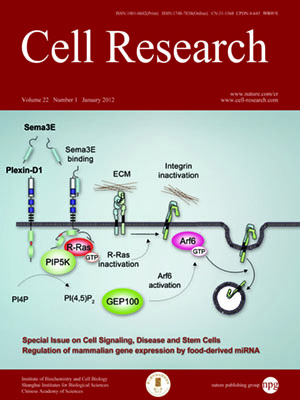
Advanced Search
Submit Manuscript
Advanced Search
Submit Manuscript
Volume 22, No 1, Jan 2012
ISSN: 1001-0602
EISSN: 1748-7838 2018
impact factor 17.848*
(Clarivate Analytics, 2019)
Volume 22 Issue 1, January 2012: 142-154
>Huansheng Xu1,2,3,*, B Alexander Yi1,2,3,*, Hao Wu1,2,3, Christoph Bock2,3,4, Hongcang Gu2,3,4, Kathy O Lui1,2,3, Joo-Hye C Park1, Ying Shao1, Alyssa K Riley
2Harvard Stem Cell Institute;
3Department of Stem Cell and Regenerative Biology, Harvard University, 7 Divinity Avenue, Cambridge, MA 02138, USA;
4Broad Institute, Cambridge, MA 02142, USA;
5Cardiac Biology, HF Discovery Performance Unit, Metabolic and Cardiovascular Therapeutic Area Unit, GlaxoSmithKline Pharmaceuticals, 709 Swedeland Road, King of Prussia, PA 19406, USA
Correspondence: Kenneth R Chien,(krchien@partners.org)
Cardiomyocytes derived from pluripotent stem cells can be applied in drug testing, disease modeling and cell-based therapy. However, without procardiogenic growth factors, the efficiency of cardiomyogenesis from pluripotent stem cells is usually low and the resulting cardiomyocyte population is heterogeneous. Here, we demonstrate that induced pluripotent stem cells (iPSCs) can be derived from murine ventricular myocytes (VMs), and consistent with other reports of iPSCs derived from various somatic cell types, VM-derived iPSCs (ViPSCs) exhibit a markedly higher propensity to spontaneously differentiate into beating cardiomyocytes as compared to genetically matched embryonic stem cells (ESCs) or iPSCs derived from tail-tip fibroblasts. Strikingly, the majority of ViPSC-derived cardiomyocytes display a ventricular phenotype. The enhanced ventricular myogenesis in ViPSCs is mediated via increased numbers of cardiovascular progenitors at early stages of differentiation. In order to investigate the mechanism of enhanced ventricular myogenesis from ViPSCs, we performed global gene expression and DNA methylation analysis, which revealed a distinct epigenetic signature that may be involved in specifying the VM fate in pluripotent stem cells.
Cell Research (2012) 22:142-154. doi:10.1038/cr.2011.171; published online 8 November 2011